Abstract
The purpose of this study is to assess the nature and magnitude of the deleterious health effects of subclinical over-exposure to lead in children. The study stems from concerns about the impact on the health of children in city slums who ingest leaded paint without overt evidence of poisoning and the health implication of rising levels of lead in the environment from automotive emissions. The study sample was derived mainly from a registry of children on whom blood lead determinations had been made by the New York City Department of Health and was supplemented by siblings of the registry cases and children from a lead belt area who had extractions of deciduous teeth in dental clinics. Information was obtained through parental interview, medical records, and psychometric evaluation. The data show that deleterious health effects occur in children who were treated for severe lead poisoning and in children without diagnosed lead poisoning who had elevated blood leads (≥0.06 mg-%). In the absence of diagnosed lead poisoning or elevated blood leads, excess lead exposure, measured in terms of high levels of lead in teeth, was not associated with deleterious health effects.
Full text
PDF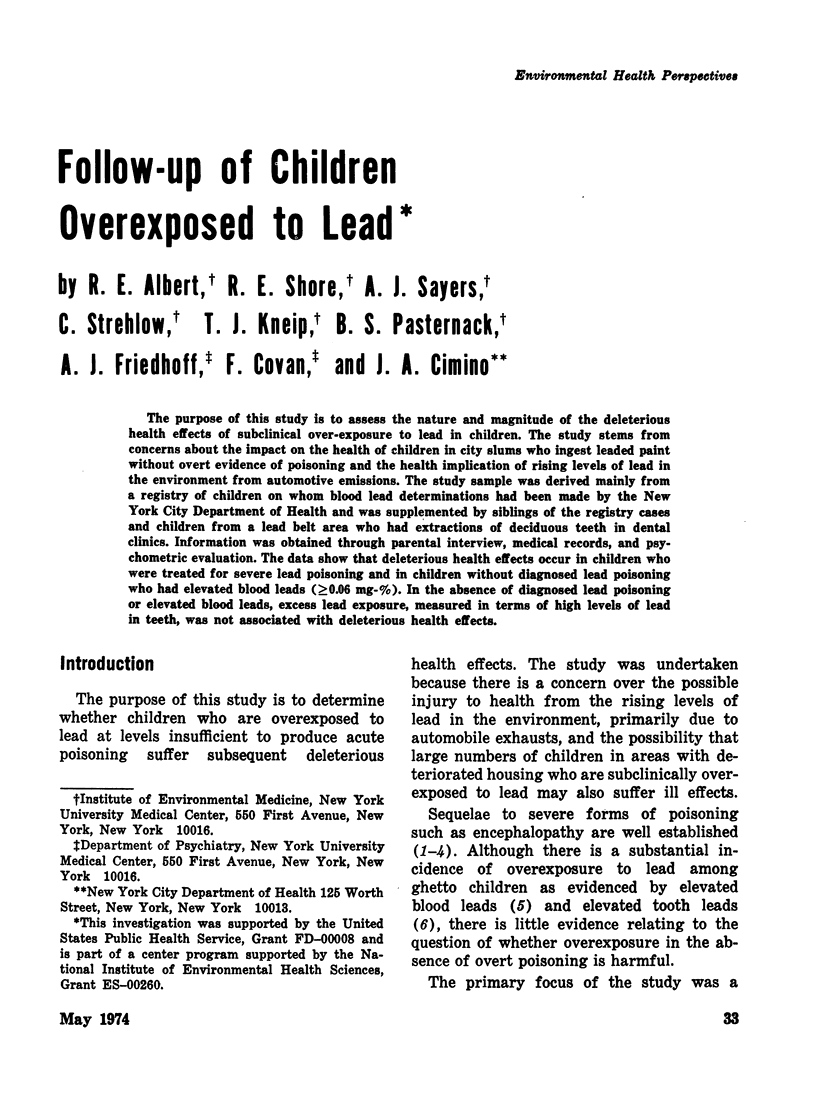
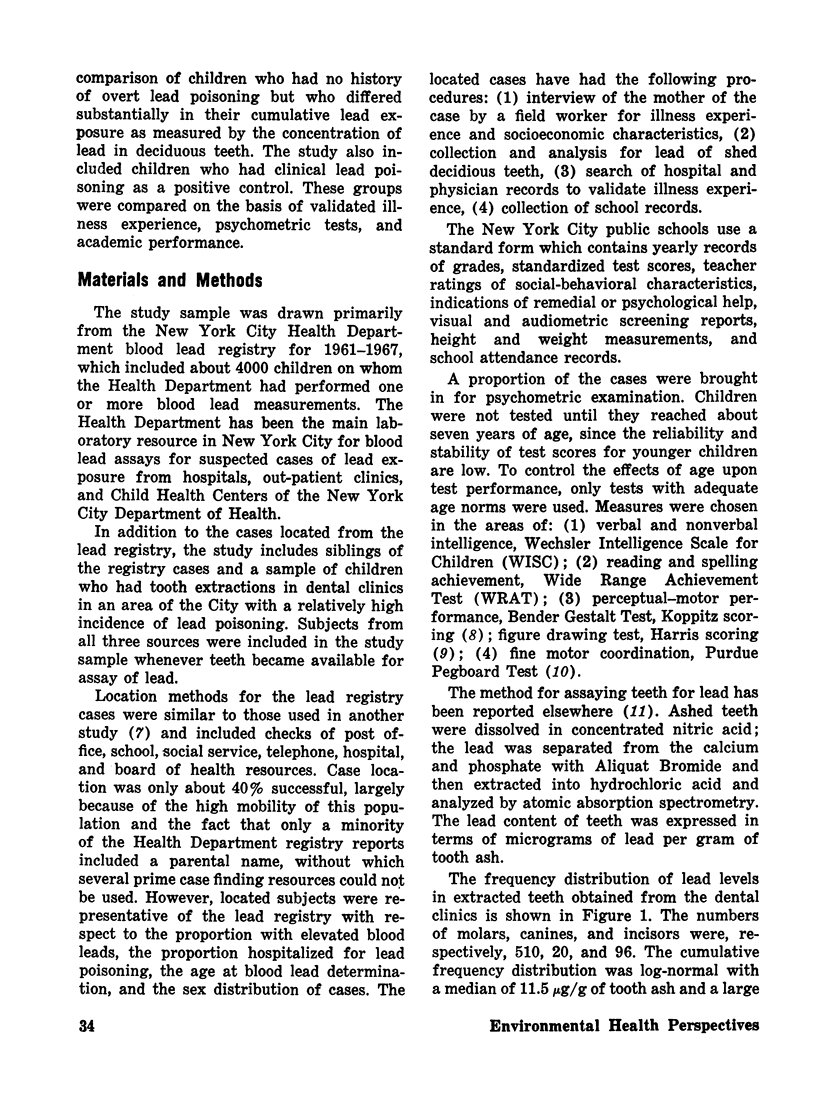
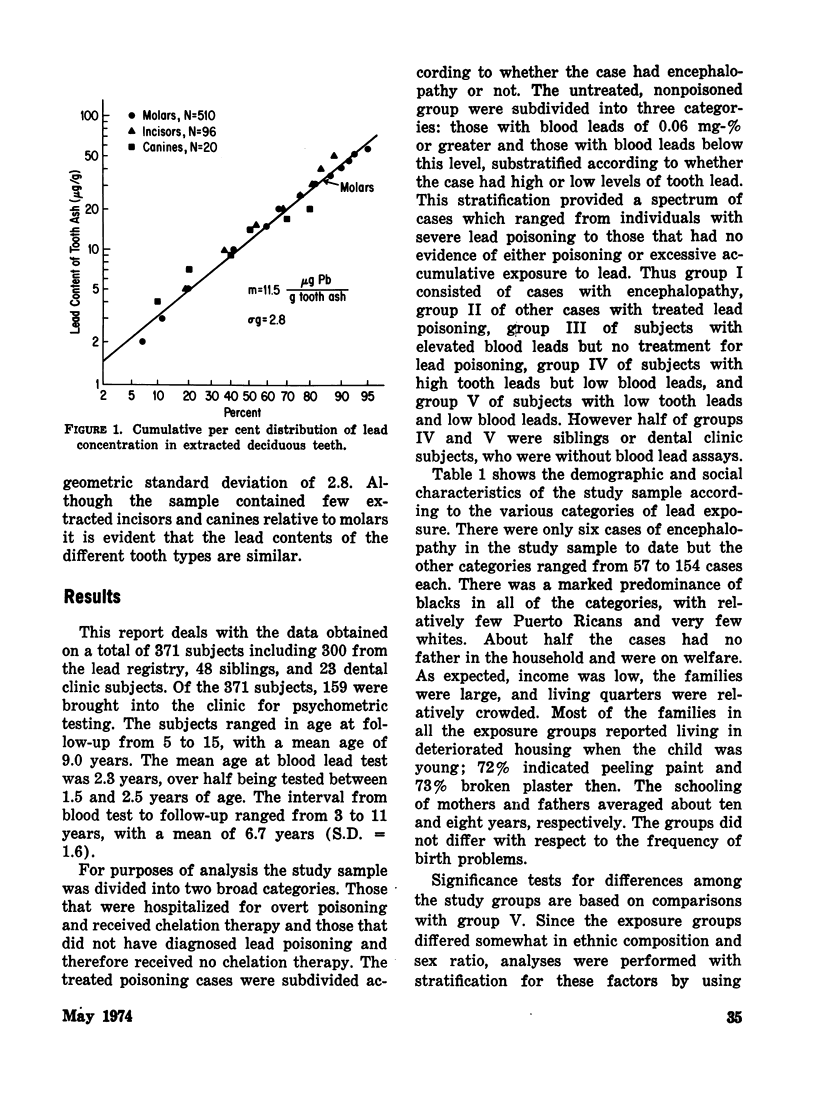
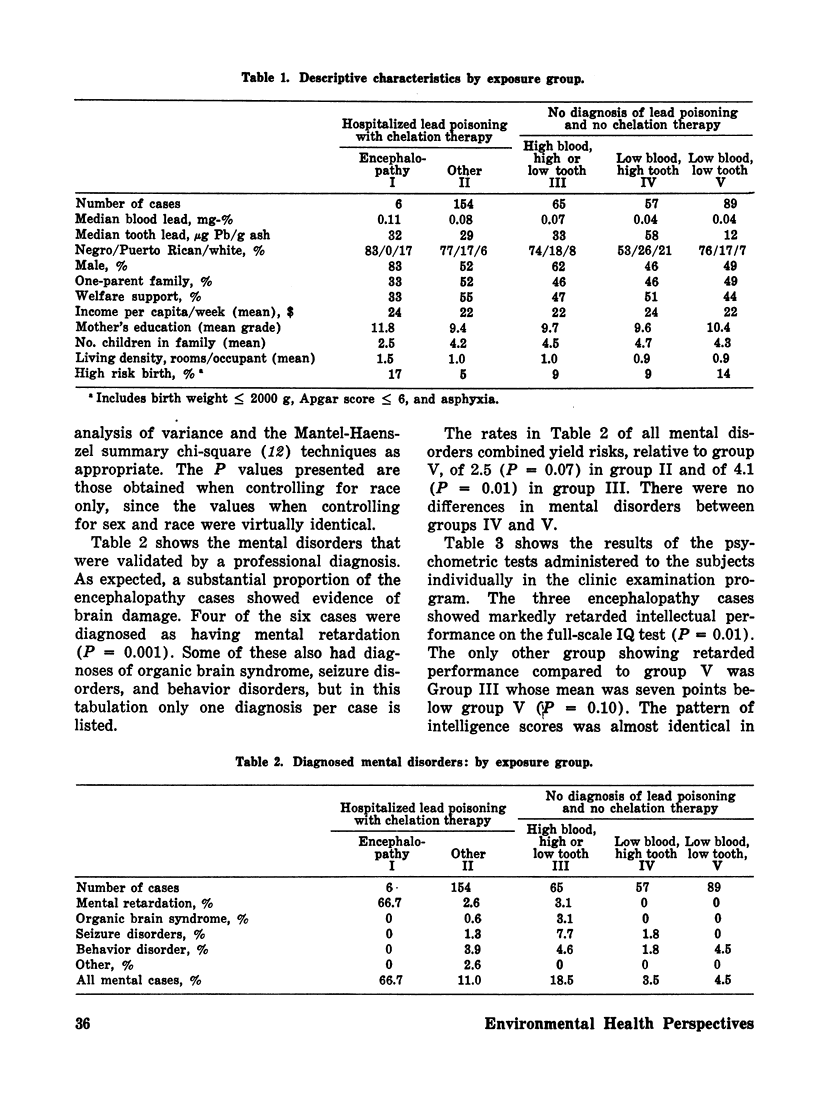
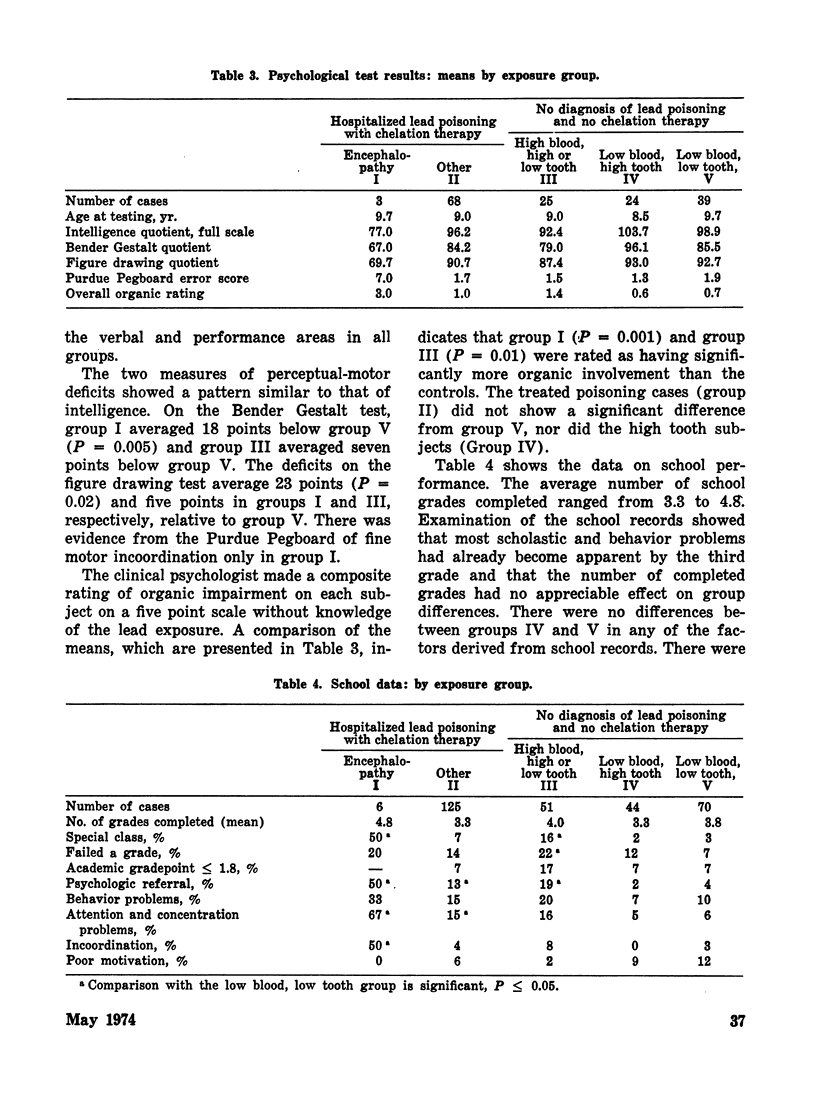
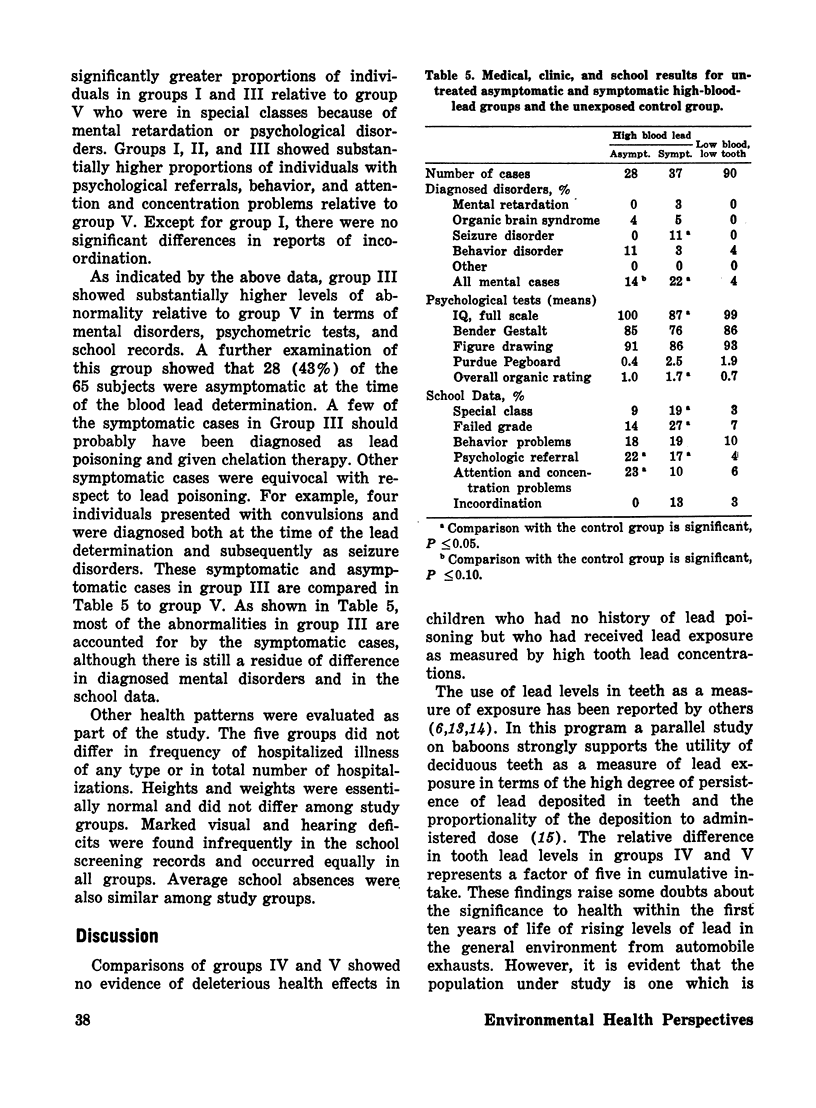

Selected References
These references are in PubMed. This may not be the complete list of references from this article.
- ALTSHULLER L. F., HALAK D. B., LANDING B. H., KEHOE R. A. Deciduous teeth as an index of body burden of lead. J Pediatr. 1962 Feb;60:224–229. doi: 10.1016/s0022-3476(62)80040-7. [DOI] [PubMed] [Google Scholar]
- Albert R. E., Omran A. R. Follow-up study of patients treated by x-ray epilation for tinea capitis. I. Population characteristics, posttreatment illnesses, and mortality experience. Arch Environ Health. 1968 Dec;17(6):899–918. doi: 10.1080/00039896.1968.10665348. [DOI] [PubMed] [Google Scholar]
- De la Burdé B., Choate M. S., Jr Does asymptomatic lead exposure in children have latent sequelae? J Pediatr. 1972 Dec;81(6):1088–1091. doi: 10.1016/s0022-3476(72)80236-1. [DOI] [PubMed] [Google Scholar]
- Guinee V. F. Lead poisoning. Am J Med. 1972 Mar;52(3):283–288. doi: 10.1016/0002-9343(72)90015-0. [DOI] [PubMed] [Google Scholar]
- MANTEL N., HAENSZEL W. Statistical aspects of the analysis of data from retrospective studies of disease. J Natl Cancer Inst. 1959 Apr;22(4):719–748. [PubMed] [Google Scholar]
- Needleman H. L., Tuncay O. C., Shapiro I. M. Lead levels in deciduous teeth of urban and suburban American children. Nature. 1972 Jan 14;235(5333):111–112. doi: 10.1038/235111a0. [DOI] [PubMed] [Google Scholar]
- SMITH H. D., BAEHNER R. L., CARNEY T., MAJORS W. J. The sequelae of pica with and without lead poisoning. A comparison of the sequelae five or more years later. I. Clinical and laboratory observations. Am J Dis Child. 1963 Jun;105:609–616. doi: 10.1001/archpedi.1963.02080040611011. [DOI] [PubMed] [Google Scholar]
- SMITH H. D. PEDIATRIC LEAD POISONING. Arch Environ Health. 1964 Feb;8:256–261. doi: 10.1080/00039896.1964.10663664. [DOI] [PubMed] [Google Scholar]
- Strehlow C. D., Kneip T. J. The distribution of lead and zinc in the human skeleton. Am Ind Hyg Assoc J. 1969 Jul-Aug;30(4):372–378. doi: 10.1080/00028896909343140. [DOI] [PubMed] [Google Scholar]


